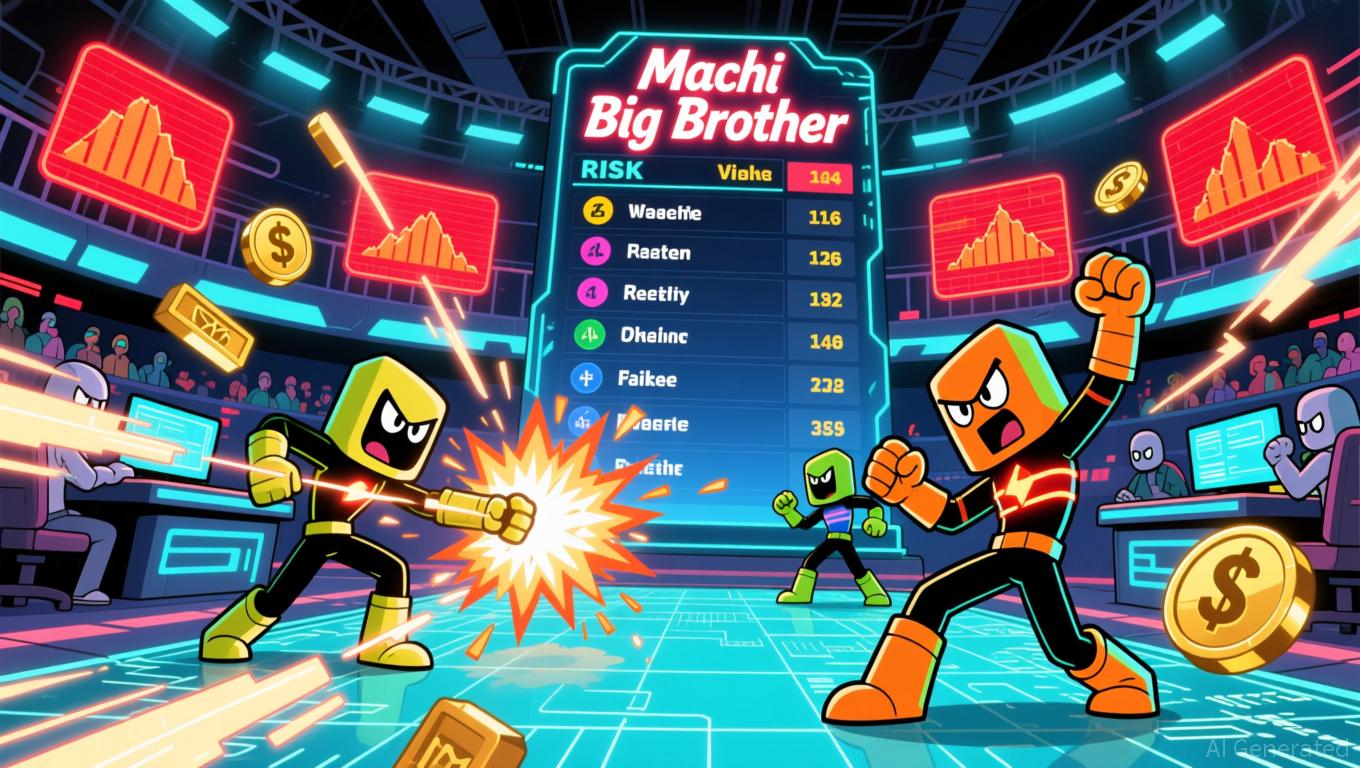Canada’s Stablecoin Strategy: Taking on U.S. Dollar Dominance in the Wake of the 2025 Crash
- Canada's 2025 budget grants Bank of Canada authority to regulate stablecoins, challenging USD dominance in crypto markets. - October crash saw $1.58B stablecoin inflows to Binance and Ethereum's record 24,192 TPS, highlighting market volatility and network strain. - U.S. regulators intensified enforcement, charging crypto ATM operator with $10M money laundering amid global scrutiny of stablecoin risks. - Circle's USDC saw $9.6T Q3 transaction volume and $73.7B circulation, demonstrating stablecoins' resi
The cryptocurrency crash in October 2025 sparked a worldwide reassessment of stablecoins, often referred to as "digital dollars" that form the foundation of much of the crypto market. As
Canada’s national government has just approved a budget that
Data from October 2025 illustrates the market’s turbulence. Binance

Amid the upheaval, certain stablecoin providers excelled.
Progress in innovation continued. Wirex and
The crash has also led to reflection within the industry.
As the situation stabilizes, the events of October 2025 stand as a warning. Stablecoins remain central to the crypto world, but their continued success will depend on clear regulations, robust technology, and sustained market trust—factors that will shape the next era of digital assets.
Disclaimer: The content of this article solely reflects the author's opinion and does not represent the platform in any capacity. This article is not intended to serve as a reference for making investment decisions.
You may also like
Aster News Today: DeFi Competition Heats Up: Incentivizing Liquidations to Draw in Traders
- Aster, a decentralized crypto exchange, launched "Machi mode" to reward traders with points for liquidations, embracing risk-taking culture. - Competitor Hyperliquid slashed taker fees by 90% via HIP-3 "growth mode," targeting liquidity providers and challenging centralized exchanges. - Both strategies reflect DeFi's arms race to attract traders through gamification (Aster) and technical efficiency (Hyperliquid), blurring financial utility with community identity. - Traders praised Aster's "failure-as-fe

Olema’s Proposal Dampens Hopes for Trial, Sparks Decline Due to Dilution Concerns
- Olema Pharmaceuticals (OLMA) shares fell 6.9-7.2% post-announcement of a stock and warrant offering, triggering dilution concerns among investors. - The TD Cowen-led offering includes a 30-day greenshoe option for up to 15% additional shares, with proceeds intended to fund breast cancer therapies like palazestrant (Phase 3) and OP-3136 (Phase 1). - Despite recent 81% stock gains and positive SERD trial data from Roche, the offering overshadowed optimism, though analysts at H.C. Wainwright and Guggenheim

Target’s ChatGPT Initiative: Securing Retail’s Future as Consumer Preferences Evolve
- Target integrates ChatGPT into its platform to boost engagement and efficiency amid soft demand, leveraging AI for trend analysis and customer service. - OpenAI's GPT-5.1 with customizable personalities and 1M+ business users highlights AI's expanding role in retail, as brands like Target compete with Walmart . - Agentic AI systems challenge traditional retail models, prompting Target to prioritize on-site tools to retain data control and brand loyalty while cutting 1,800 roles. - Analysts warn retailers

XRP News Today: XRP Surges to $90—Is This a Retail Buying Craze or the Start of Institutional Investment?
- XRP surged to $90 on Kraken amid institutional interest and the exchange's $800M funding round, valuing it at $15B ahead of a 2026 IPO. - Kraken's U.S. XRP ETF (XRPC) generated $58.6M in first-day trading, but XRP dropped 4.3% as macroeconomic pressures offset ETF inflows. - The exchange's Citadel Securities partnership and global expansion highlight its push to integrate crypto into mainstream finance, though XRP remains in a medium-term downtrend. - Analysts caution that real-world adoption and regulat
